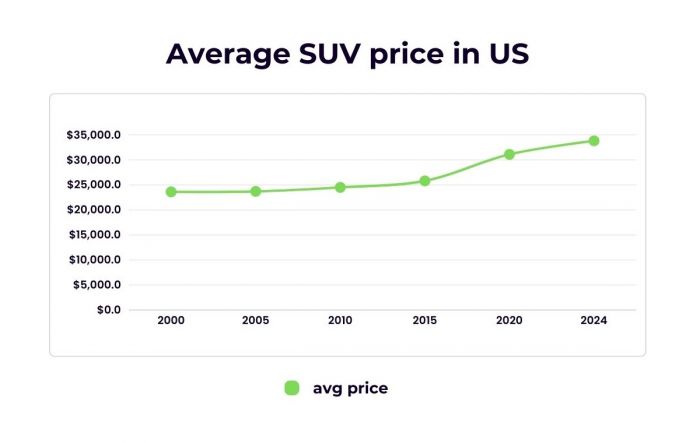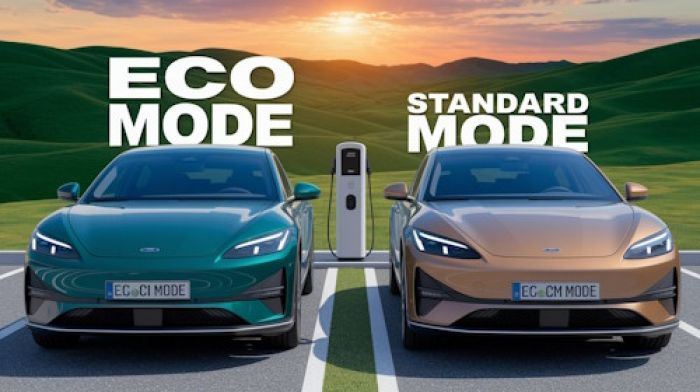The KIA Sportage is now available with several engine options including the 2.5L naturally aspirated engine, 1.6L full-hybrid powerplant, and also the 1.6-liter plug-in hybrid option. The hybrids are based on the same gasoline engine which is a turbo Smartstream unit but they have different specs and best applications.
Today, we'll tell you about the KIA Sportage plug-in hybrid powerplant based on the 1.6L Turbo engine (G4FT/G4FU) and also the electric motor that comes with a solid battery pack. This is the version of the KIA Sportage that can go several dozen miles using only electric power and also can be charged like an EV. So, this is a good bridge between gas-powered vehicles and fully electric cars.

Key facts and my opinion about the engine
- Production years: 2020-now
- Average lifespan of G4FT/G4FU: 130,000-150,000 miles
- Fuel supply type: direct injection
- Power range: 180 hp
- Fuel efficiency: excellent
- Engine block material: aluminum
- Engine reliability score: low
- The most common problems: timing chain issues, catalytic converter too close to the engine block, no lifters.
Key features of the 1.6L Turbo Plug-in Hybrid engine in the Sportage
The fifth-generation KIA Sportage was first shown in 2021 and started selling in the US in 2022. It comes now with only one pure-gas engine and two hybrid versions. We've already told you in our recent articles about the base engine and the FHEV powerplant and now it's the right time to talk about the plug-in hybrid.
The PHEV Sportage costs a minimum of $40,000 and comes in the X-Line trim with a lot of cool features and technologies onboard. Although this is the most expensive version of the Sportage, it draws a lot of attention thanks to some EV features you get with this vehicle.
Here are some key points about the PHEV powerplant in the new Sportage:
- the heart of this powerplant is the 1.6L Smartstream Turbo engine which is not a bad option in terms of power and flexibility;
- there is also the electric motor (permanent magnet traction electric motor) that may take all control over sending power to the wheels independently;
- the battery pack is the 13.8-kWh Lithium-Polymer (LiPo) battery that powers the electric motor and is charged from the gas engine;
- the gas engine doesn't only charge the battery but can also take over the whole process of sending power to the wheels;
- the powerplant is capable of an EV range of about 34 miles according to EPA estimated measures which is not that great;
- the good thing is that this powerplant has a 6-speed automatic transmission which is pretty durable and better than the industry standard e-CVT;
- the overall power of the system is 261 hp and the torque is rated at 258 lb-ft which is not that bad for a compact SUV.
The all-electric range is not bad but not great. Many competitors will offer more miles in the EV mode. Also, the power and torque might be better to allow the SUV to get better acceleration. We've spoken to some owners of the Sportage PHEV and they told us the acceleration and speed are OK but nothing more.
The 6-speed automatic transmission looks really good and is actually the sip of fresh air among hybrid technologies. Almost all PHEV SUVs come equipped with e-CVT transmissions that are not as durable and make a high-mileage car just a money bomb on wheels. Everything in these cars may fail at around 100,000 miles and you will need to invest thousands to get it back on wheels. This will not be that bad in the Sportage.
How many miles will the KIA Sportage PHEV engine last?
So, when we are talking about hybrid vehicles, we need to look at three main units: gasoline engine, battery pack, and also transmission. Electric motors usually last much longer than anything else in these cars, so we won't take them into consideration.
Let's start with the transmission. This is a traditional automatic transmission (not a CVT, dual-clutch, or whatever). And it's going to last about 150,000 miles and then it will need some small repairs. After that, it can go 50-70 thousand miles more. So, this is certainly not the unit that will cause the death of your Sportage PHEV.
The battery pack is pretty small for the SUV, so it's not going to last really long. We believe the battery pack will have to be replaced before the vehicle hits the 100,000-mile mark. In some Sportage vehicles, the battery will last longer. The replacement costs are going to be high.
The G4FT/G4FU engine doesn't throw a lot of good surprises, too. This 1.6L Turbo engine is going to live about 140,000 to 160,000 miles. After that, it may ask for some very expensive repairs. Also, the aluminum block may just fail to live longer, so engine replacement may be a good option. Well, not so good for your budget though.
Overall, the durability of the KIA Sportage PHEV powerplant is about 140,000 miles which is not that great. After that, the gas engine dies and the battery pack is already dead. Replacing the battery pack doesn't make sense because shortly after that the Smartstream engine will ask for expensive repairs or even replacement.
What are the most common problems with the Sportage PHEV engine?
Again, all problems should be viewed separately for different units of the hybrid powerplant. We just don't want to take your time by explaining dozens of different issues, so we've tried to compile some of the most common issues that may happen with all units and parts of this powerplant.
Here they are:
1. Battery pack premature death
The battery can die much earlier than you expect because it's not big. It needs a lot of recharging cycles and this kills the battery. Interestingly, KIA offers a 10-year warranty for the battery pack which is limited to 100,000 miles. But they won't replace the battery for free if it just lost its juice a little.
When the battery loses its capacity, your EV range goes down and the fuel economy gets worse. After 100K miles, the battery becomes helpless and needs replacement.
2. CVVD potential issues
While CVVD is a very new technology of valve timing control, we believe it's going to be problematic. Now, we don't have a lot of records and reports about issues, but we've studied this technology and don't see why it should be any better than CVVT which is thought to be faulty and problematic.
This new technology is also going to be very expensive to repair and even diagnose.
3. Timing chain issues
All Smartstream engines share this issue with timing chains. The chains themselves are pretty thin and can't live up to 150,000 miles. If the chain stretches, it starts rattling and this is a clear sign that it requires immediate replacement.
If not replaced, the chain may break and cause a lot of issues like broken valves, stuck engine, complete engine failure, etc. Better replace the timing chain at 80,000 miles to avoid problems. This will let you drive the vehicle for another 70-80 thousand miles without thinking about the chain.
4. Catalytic converter potential issues
The catalytic converter is located in the exhaust manifold - too close to the cylinders. When the converter starts going bad, it may break the ceramic element that is placed inside into pieces. Some of these small ceramic pieces may go into the cylinder block and scratch it. This may cause excessive oil consumption and complete engine failure after some time.
Pay attention to the health of your catalytic converter and replace it if it shows any problems.
What can you do to prolong the life of the PHEV engine in the Sportage?
To drive your KIA Sportage plug-in hybrid vehicle longer, you will need to focus on several things:
- the health of your battery is super important for this vehicle's reliability;
- the 1.6L engine needs your attention - it should be maintained regularly and properly;
- pay attention to charging your battery from the grid - read KIA's recommendations;
- pay attention to the catalytic converter - it may kill the engine if broken;
- learn more about CVVD and keep an eye on possible symptoms of its failure.
Also, general recommendations on how to use a plug-in hybrid vehicle should be learned before you start driving your Sportage PHEV. Battery health is the key to driving your hybrid Sportage for a long time and with no expensive issues.
But we should say the 1.6L Smartstream Turbo engine probably isn't the smartest choice for the hybrid powerplant by KIA. This engine was only presented in 2020 and it's very fresh, so we still don't know what can fail in it after some miles.
Final thoughts
We believe the KIA Sportage is a great choice of PHEV with just 35 MPG in any type of driving. This is a good hybrid SUV for everyday use. It also offers a highly technological engine, a good battery pack, all-electric driving, possibility to charge its battery with your home socket or any EV charger. But, for its money, the vehicle doesn't look like a clear market winner.
About the authors
The CarAraC research team is composed of seasoned auto mechanics and automotive industry professionals, including individuals with advanced degrees and certifications in their field. Our team members boast prestigious credentials, reflecting their extensive knowledge and skills. These qualifications include: IMI: Institute of the Motor Industry, ASE-Certified Master Automobile Technicians; Coventry University, Graduate of MA in Automotive Journalism; Politecnico di Torino, Italy, MS Automotive Engineering; Ss. Cyril and Methodius University in Skopje, Mechanical University in Skopje; TOC Automotive College; DHA Suffa University, Department of Mechanical Engineering






Add comment